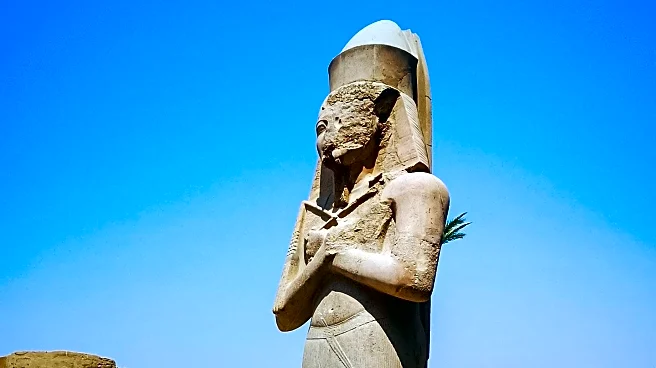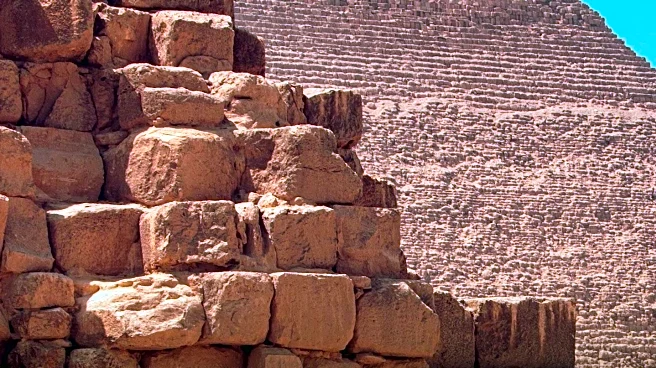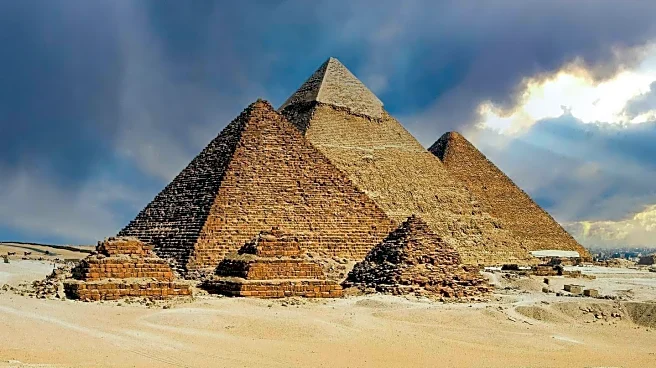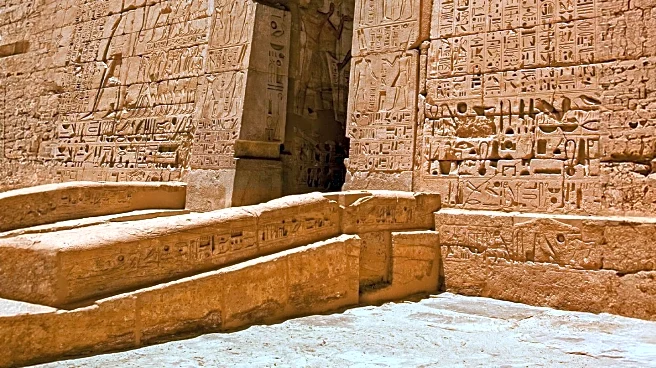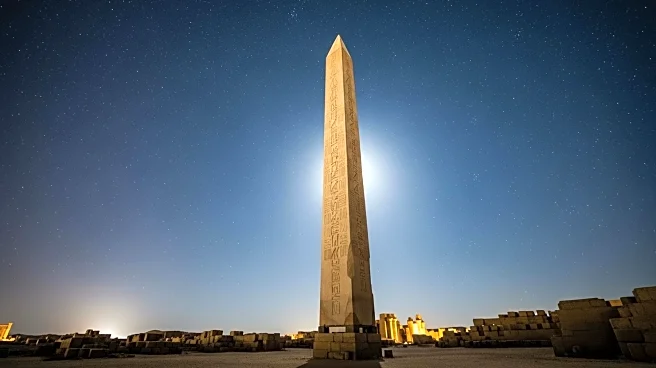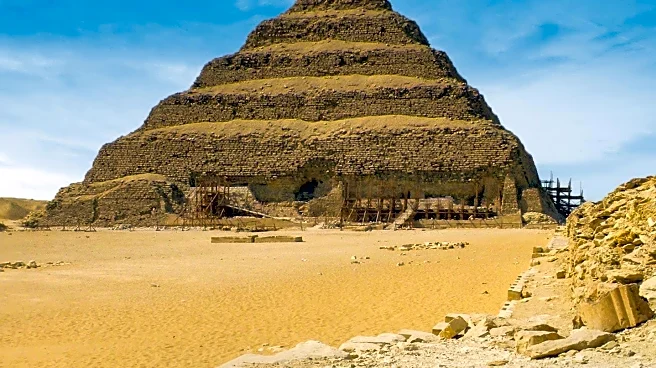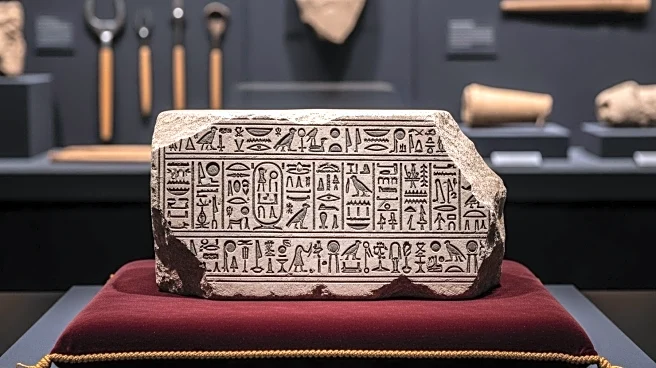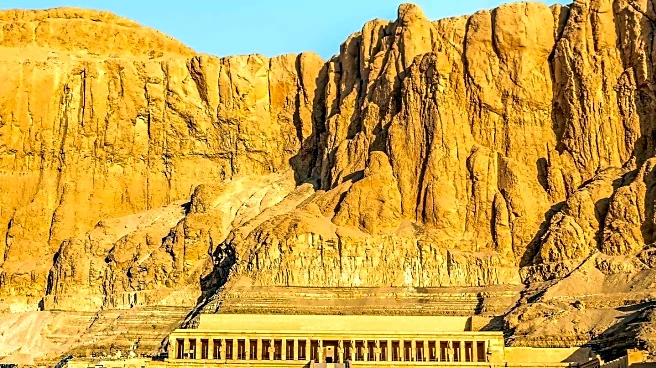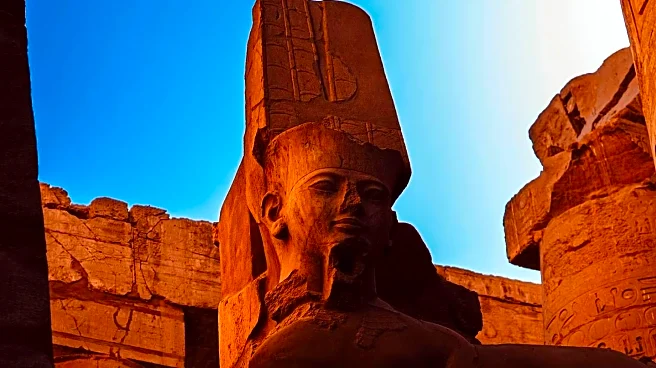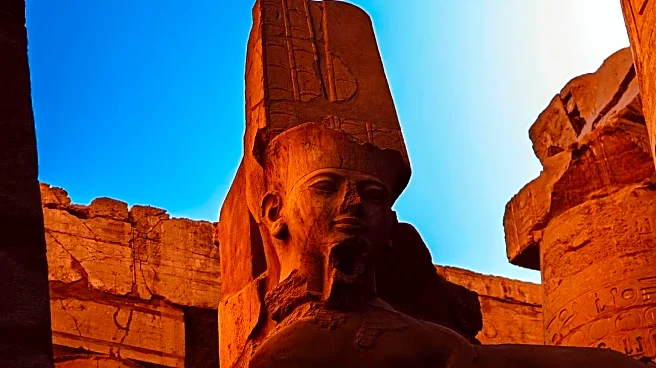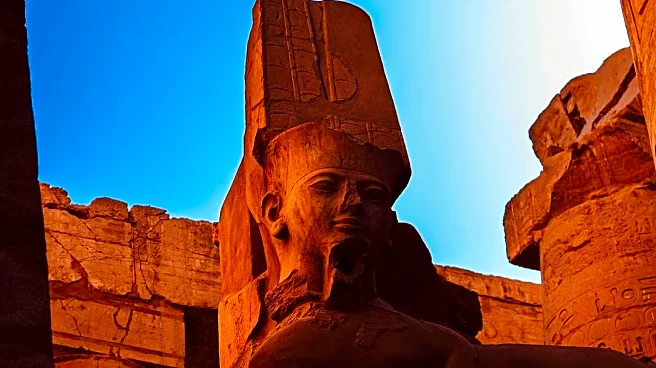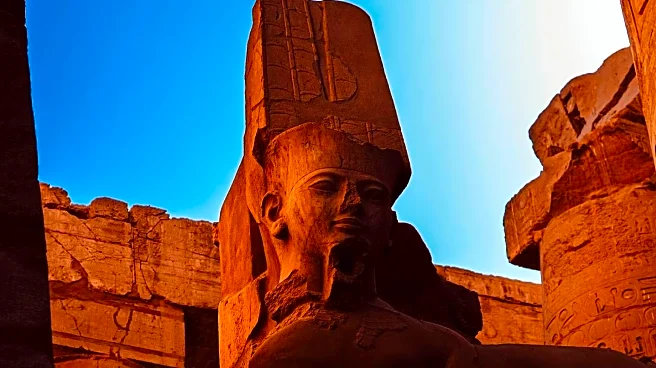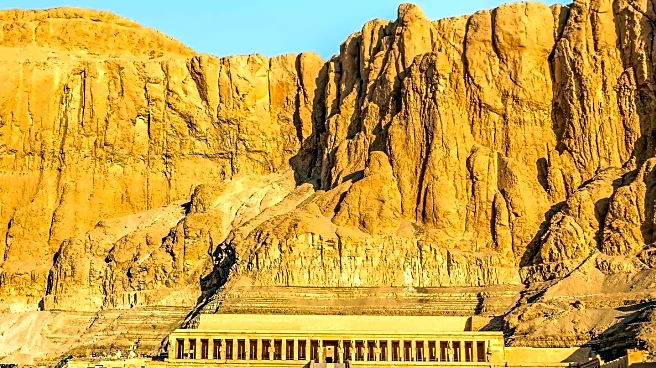What is the story about?
What's Happening?
A comprehensive geoarchaeological survey of Egypt's Karnak Temple has revealed new insights into the temple's age, links to ancient Egyptian mythology, and the interplay between its riverine landscape and historical occupation. The study, published in Antiquity, involved analyzing sediment cores and ceramic fragments to map the site's landscape changes over 3,000 years. Researchers found evidence of the temple's earliest occupation during the Old Kingdom and its connection to creation myths.
Why It's Important?
The findings provide a deeper understanding of one of the ancient world's largest temple complexes, enhancing knowledge of Egypt's cultural heritage. The study's insights into the temple's landscape and its religious significance offer valuable information for historians and archaeologists. The research contributes to the preservation and interpretation of Egypt's historical sites.
What's Next?
The research team plans to study other major sites in the Luxor region to further understand the landscapes and waterscapes of Ancient Egypt's religious capital. Continued exploration may uncover additional links between historical sites and ancient myths, enriching the narrative of Egypt's cultural history.
Beyond the Headlines
The study highlights the importance of interdisciplinary research in uncovering historical truths and preserving cultural heritage. The connection between the temple's location and creation myths underscores the influence of religious beliefs on architectural decisions in ancient societies.
AI Generated Content
Do you find this article useful?
